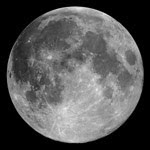"Typical," he laughed. "It's funny how, for me, it's just a feeling and you have the figures to back it up!"
My obsession with logging things on spreadsheets is becoming legendary and, right enough, our poor summer has been reflected in an increasing difference in the generation from the panels between the first and second year of operation. This first graph illustrates the difference between the two summers.

It started well but we did have a ridiculously awful late May and June. We even had a storm that would not have been out of place in the middle of January. A lovely spell in July meant that this summer almost caught up with last, but since August and right through autumn, there has been no shortage of cloud over west central Scotland and the declining orange line on the graph shows the result in my generation.
As of today, the second year of the panels' operation has yielded 170 fewer units of power compared to last year which represents an income drop of about £73. So are there any reasons why this summer has been so bad?
It is next to impossible to treat a single summer as a statistically valid data point so I'll throw a health warning over the following but it does seem that, over the short term at least, the Sun's variability has an effect on the weather in the northern hemisphere.
Now, of course, the Sun's output is the basic energy source for all weather on Earth but scientists were loathed to make a connection between the slight variability we see on our local star with more profound changes in weather, despite a number of interesting coincidences. For example, many of our recent hot summers in the UK do coincide with the peak of the Sun's sunspot cycle. In 2003, we were soaking up the Sun in Kirkwall on the Orkney Isles when they had their hottest day ever recorded at 26 degrees. (Orkney is quite far north and surrounded by sea which means that although it can be a wild and stormy place, it never really experiences extreme temperature changes.) At the same time, the heatwave caused the deaths of many old folk in France which became a national issue for them.
My mum tells me that the summer I was born (1959) was a very hot one and she was glad to get me out. The following graph, which shows monthly sunspot numbers, indicates that for both these years, the Sun was at the maximum part of its 11-year sunspot cycle.

However, a counter to that is the summer of 1976 which was very long and very sunny yet which coincides with the sunspot cycle being at its minimum. Yet it has long been noticed that major periods of low sunspot activity coincide with depressed temperatures in the northern hemisphere. The most notable of these is a period in the late 17th century called the Maunder Minimum which also saw normally ice-free rivers becoming fully frozen on regular occasions. A smaller dip around 1800 also seemed to be associated with famously cold winters.
Now new research by the Met Office and others based on measurements from NASA's SORCE satellite begins to hint at a possible mechanism for these coincidences. From this BBC article, it seems that the Sun's UV output is much more variable than previously thought. Its effect on the atmosphere is theorised to affect our jetstream, the high-speed airflow that dictates the run of low-pressure systems that feed up the Atlantic Ocean towards the UK
Essentially, the quality of the Scottish summer is dramatically affected by how far south the jetstream runs and it seems that the absorption of energy from UV sunlight may be a major factor in that. If the jetstream is north of the UK, we sit in the same high pressure system that dominates the weather of southern Europe and we get more sunlight. If the jetstream comes south, it brings with it the frontal systems that mean cloud and rain.
The research is mostly concerned with how cold our winters get and it suggests they may be milder over the next few years as the Sun's cycle builds to a peak. Right enough, we've just had two very cold winters and they coincide with the longest period of no sunspots for a couple of hundred years. If so, I might have fewer days when snow on the panels blocks their ability to generate anything. I'd like to think that in the near future, there might be a summer to compare with those of years gone by. That is something that would transform the return from the panels.
Back to the generation graphs.

This graph represents my generation since installation and the patterns are becoming clearer. Of note is the truncated summer peak. As the Sun gains altitude towards midsummer, one would expect the average figure to display a rounded curve that is roughly the inverse of the winter dip. instead, for both summers, there is a pronounced clipping of the curve. My favoured explanation for this is the tall trees to the northwest of the house. As the setting Sun of summer goes towards the northwest, it begins to hit these large trees which cut off the last hour or so of sunlight.
Another figure of note from the spreadsheet is the average generation across the year. It stands at 6.69 units per day, slightly below the 6.79 figure that had been my original target and it represents 2,441 units over the last year. Given that I am 170 units down over the summer, this low figure is hardly surprising. Let's see what the winter brings.
